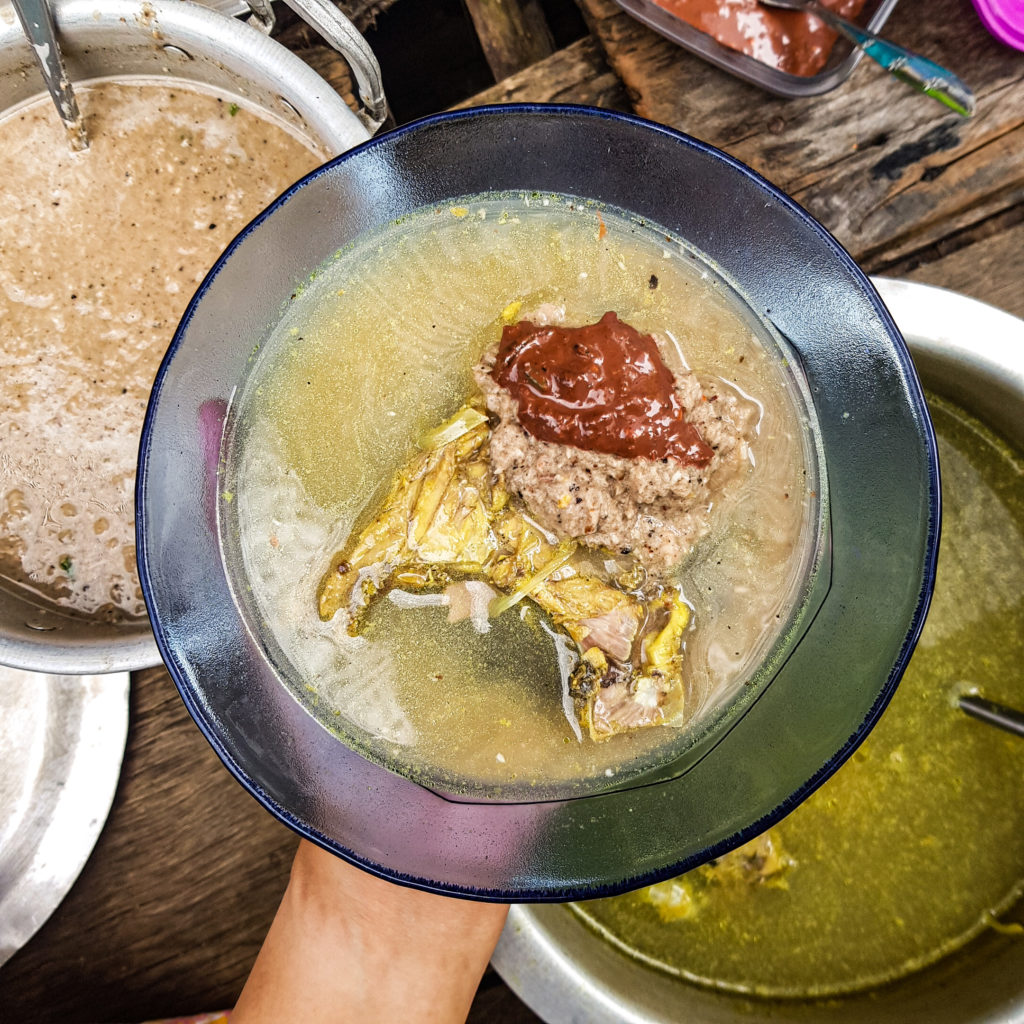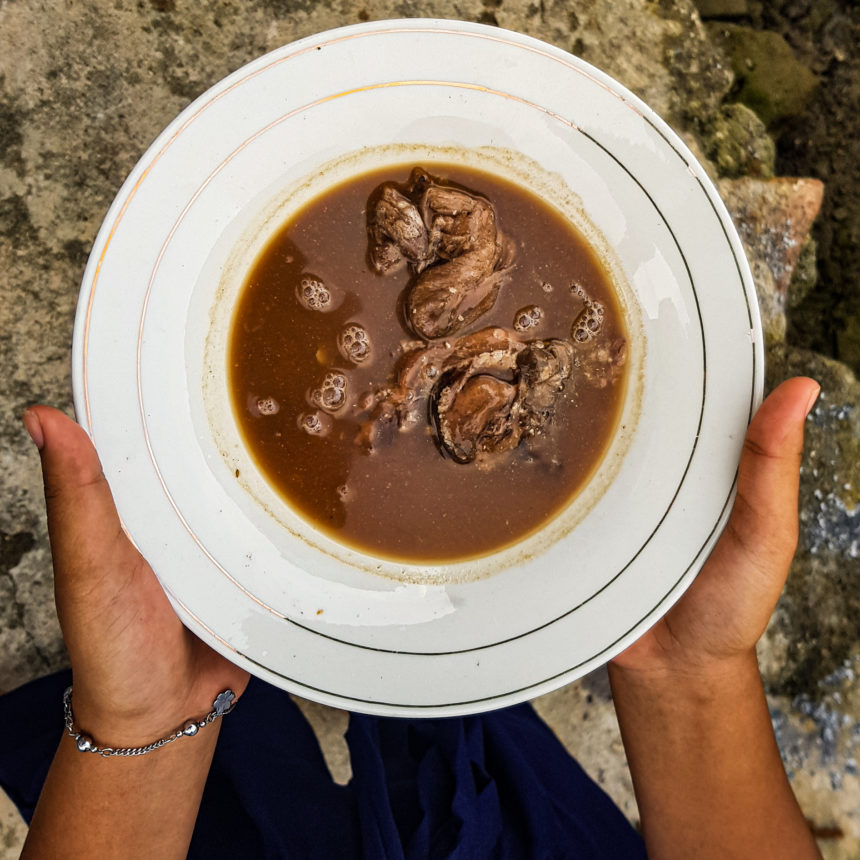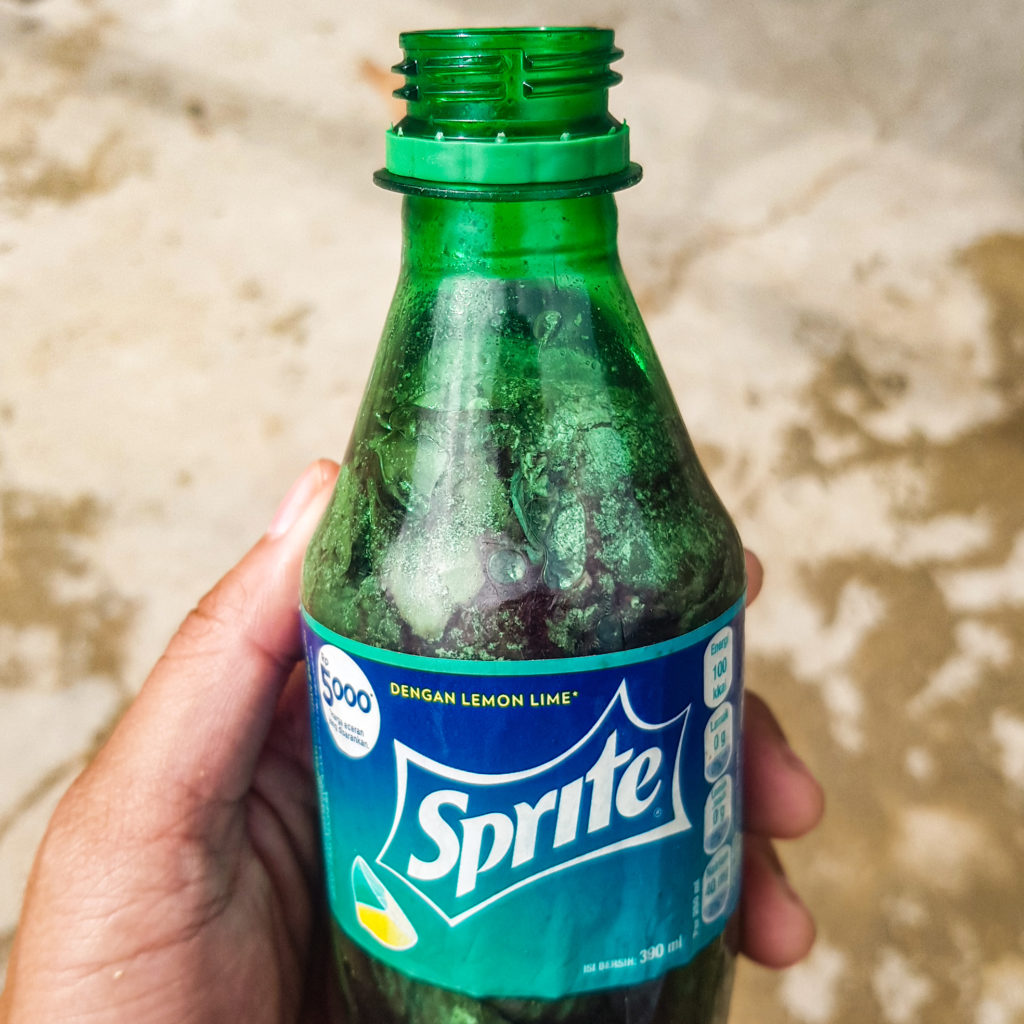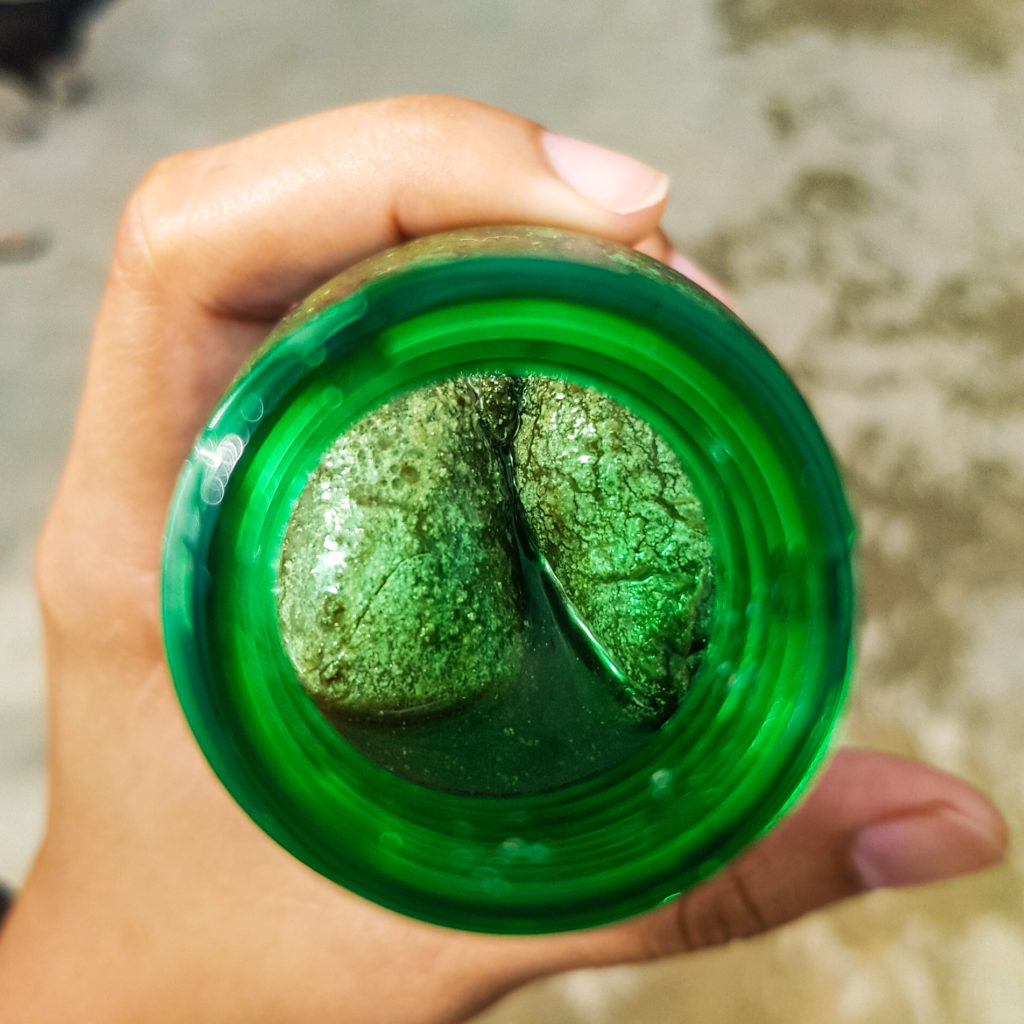If you are visiting Kiabu Village and wondering what to eat there, here are the four traditional foods that are loved by the local community and true culinary delights:
Colek Asam Jawa
If you’re from Jakarta, the taste of this dish reminds you of the street-side rujak buah (sweet-and-sour mixed fruits in sambal) that you can easily find in every corner of the capital city. But, unlike rujak buah that uses palm sugar as its main ingredient for the spicy sauce, Kiabu’s Colek Asam Jawa is made by mixing tamarind and granulated sugar together with water, add in bird’s eye chilies and a pinch of salt and the resulting flavour is a distinct sour, spicy taste that pairs well with local fruits like papaya, or what the Kiabunese call betik, and raw mango. It’s best to consume this refreshing dish on a hot afternoon day, right after lunch.
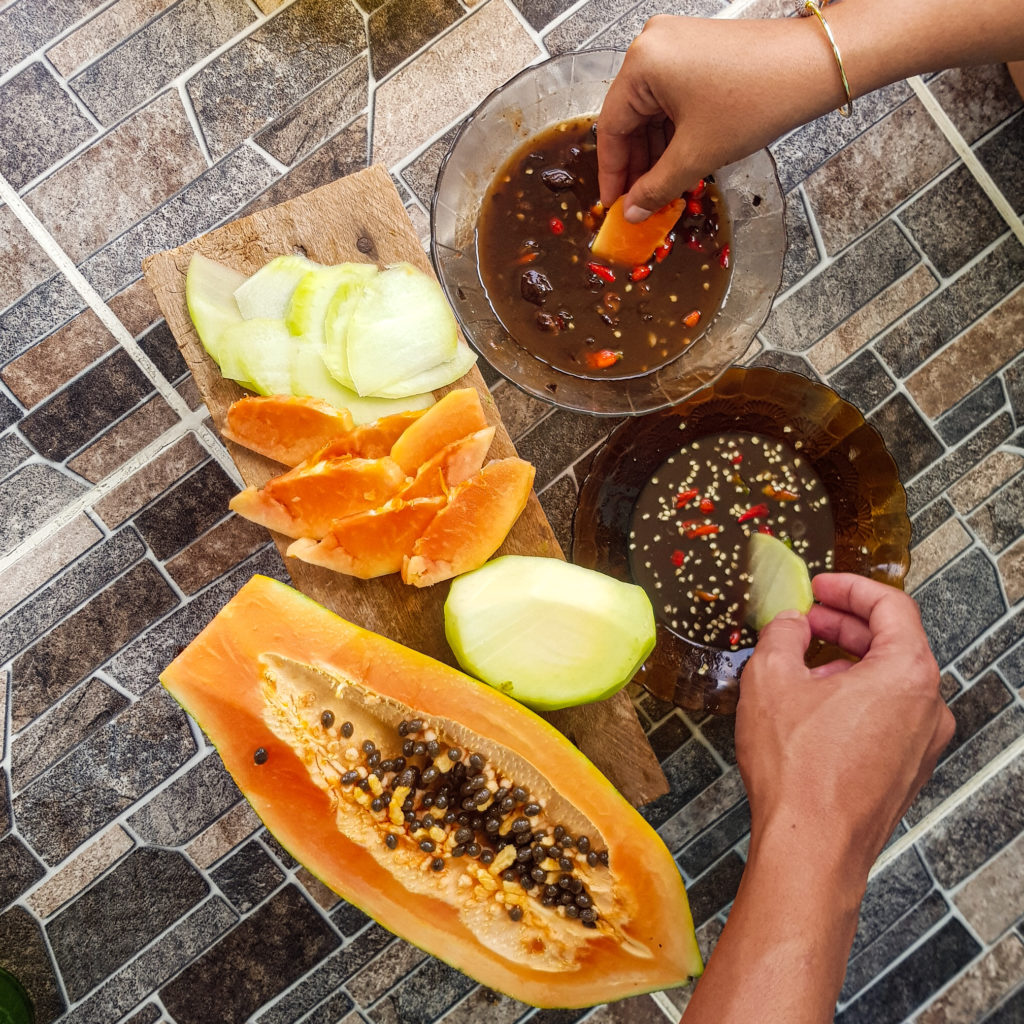
Quti Bako Srikaya
Or roti bakar srikaya (toasted bread with srikaya jam) in Indonesian is a traditional, homemade bread made mostly by women in Kiabu. Regular white bread is not readily available in Kiabu, the community has to order it from Tarempa and the price then becomes too high when it is sold in the village. So instead of purchasing it from another town, Kiabu people opt to make it themselves and call it quti bako. One of the popular bread makers in town is ibu Nora, who is also a member of our Organic Home Farming initiative. She is a self-taught baker who even traveled to Tarempa to learn how to make healthy bread without any preservatives. Every day Ibu Nora wakes up in the wee hours of the morning and begins prepping the dough for quti bako. By 11 a.m. she is already in front of her kerosene stove toasting the bread; she will then take the freshly made quti bako to warung (kiosks) and it will be sold out in no time. Some people even come to ibu Nora’s home to buy the quti bako directly from her. Her quti bako tastes a lil’ bit salty, it has that crunchy texture on the outside and soft on the inside. Spread kaya jam on top of it and pair it with a cup of black coffee, quti bako is the perfect snack to enjoy anytime of the day.
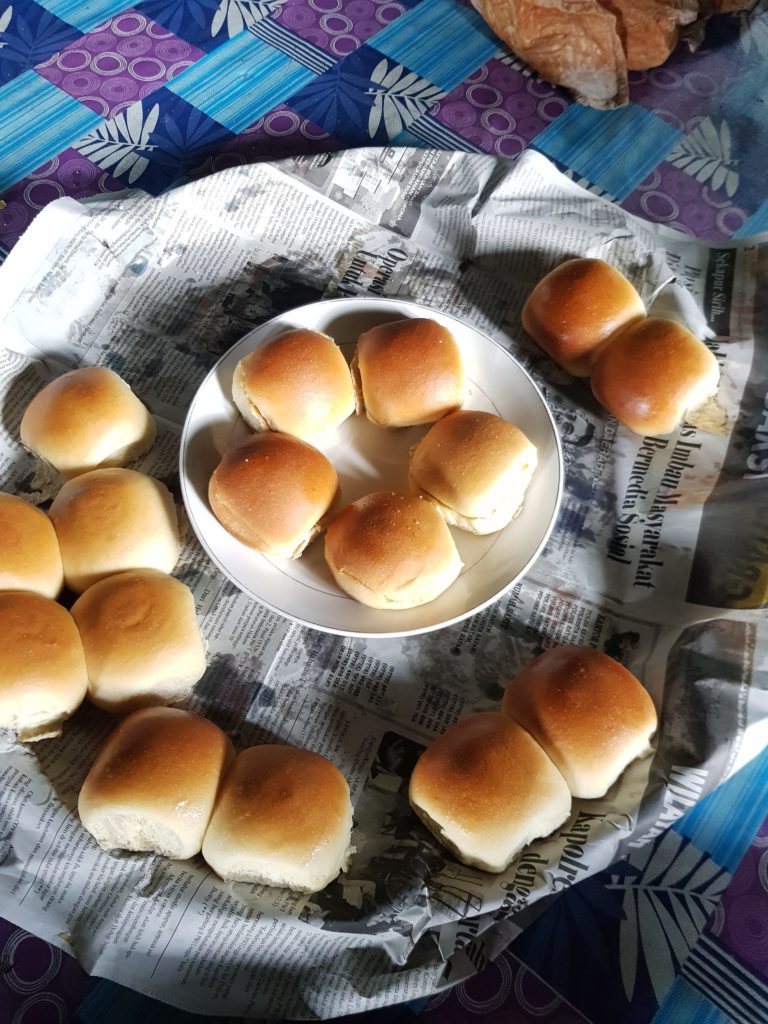
Pedok Peqot Ikan Simbok
The meaning of this dish in Indonesian is fermentasi perut ikan tongkol (fermented guts of mackarel tuna). The making of pedok is pretty unique, first take out the fish guts, cover it with salt, put it in a bottle, seal it and keep it there for three days or even up to a month. A bit of a warning, If you didn’t grow up eating pedok, the strong smell coming from the guts might be too much for you. Pedok has that savory, sour taste to it; there are two ways to eat it, first you can eat it raw with pelam (raw mango) and pineapple, or you can cook it and serve it with boiled cassava leaves, another fish-based dish and warm rice. There’s actually a popular myth on pedok that Kiabu people still believe to this day, legend has it that if you serve a bride pedok and she likes the dish, it will rain heavily on her wedding day.
Kebuyat
Alternative to rice, kebuyat is made of aci (tapioca starch) and is high in carbohydrates; this dish is very similar to papeda from the eastern part of Indonesia. In Kiabu, people love to eat kebuyat with pindang ikan tongkol dengan kuah bening (mackarel tuna in clear pindang soup) or grated coconut that is smoked and cooked with spices. Don’t forget to add sambal balacan (shrimp paste) to make it spicy! Also, please remember to always eat kebuyat while it’s still hot as it will get hard when it’s cold.
